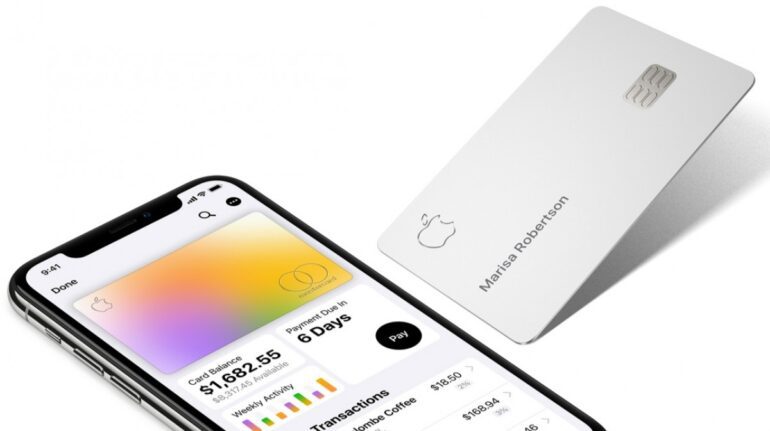TL;DR:
- Apple Card savings account attracts nearly $990 million in deposits and 240,000 accounts within a week.
- Apple’s brand value and market timing contribute to its success.
- Modern customers prioritize ease of use, convenience, and personalized offerings.
- Traditional banks should transform their business models to remain competitive.
- Hyper-personalization requires breaking down silos and analyzing customer data.
- Upgrading technological foundations is crucial for long-term growth and profitability.
Main AI News:
The recent introduction of the Apple Card savings account in collaboration with Goldman Sachs has sent shockwaves through the financial industry. Nanda Kumar, the esteemed CEO of SunTec, a prominent player in the banking sector, sheds light on the implications for traditional banks and emphasizes the pressing need for them to embrace hyper-personalization in order to remain competitive in this evolving landscape.
Apple’s foray into the financial services arena began with Apple Card, a payment facilitator on Apple devices. However, its expansion into traditional banking services, such as savings accounts and deposits, has garnered an overwhelmingly positive response from customers. Within a week of its launch in April 2023, the Apple Card savings account accumulated nearly $990 million in deposits and attracted 240,000 new accounts. This resounding success serves as a wake-up call for traditional banks, underscoring the unprecedented threats posed by technology providers and the imperative to transform their business models and strategies.
While other tech organizations have also ventured into the financial services space, the triumph of the Apple Card savings account begs the question: What sets it apart? First and foremost, the Apple brand carries tremendous value and boasts an extensive customer base. Additionally, the market context at the time of its release played a crucial role in its success.
During Q1 2023, the American financial market faced turbulence following the collapse of the Silicon Valley Bank and other major banking failures. Lingering inflationary pressures and the looming threat of a recession further compounded the situation. Against this backdrop, Apple introduced a high-yield savings account with an attractive interest rate of 4.15 percent, no fees, and no minimum balance requirements. Moreover, the seamless user experience, leveraging the existing Apple wallet as the banking interface, proved instrumental in shifting consumer mindsets. By offering unique benefits that traditional banks don’t, Apple swiftly and successfully penetrated the traditional banking space, leaving its competitors reeling.
The shifting priorities of modern customers underscore the importance of hyper-personalized banking experiences. Today’s customers crave ease of use, convenience, and tailored offerings that cater to their individual needs. They expect access to banking platforms anytime, anywhere, not just for payments but for a comprehensive suite of financial services. The rise of embedded finance, projected to reach $230 billion by 2025, demonstrates customers’ openness to exploring new banking options provided by non-traditional providers. Furthermore, younger demographics, such as Millennials and Gen Zers, entering the formal banking economy, demand greater innovation, convenience, and a strong ethical stance from the brands they engage with.
Contrary to popular belief, the shifting customer priorities do not spell doom for traditional banks. Rather, they present a remarkable opportunity for banks to reinvent themselves and meet the evolving demands of the modern customer. While technology undoubtedly plays a pivotal role in this transformation, banks must transcend mere digitization and focus on revamping their brand image while embracing innovation. Partnering with fintech and technology giants can unlock the potential of embedded finance and Banking-as-a-Service (BaaS) models, enabling banks to deliver personalized and innovative solutions to their customers. By harnessing the emerging API economy, banks can position themselves as orchestrators of a comprehensive banking ecosystem, integrating financial and non-banking partners to fulfill customer requirements. Now is the time for banks to invest concerted efforts in enhancing their brand presence, ensuring their offerings align with the values of younger generations.
To achieve hyper-personalization, banks must break down organizational silos and leverage customer data collected from various touchpoints. This wealth of data serves as the foundation for tailored offerings, encompassing personalized pricing, offers, loyalty programs, and rewards. Additionally, thorough analysis of customer data is pivotal for any banking ecosystem orchestrated by the bank.
Banks must focus on capturing and analyzing vast amounts of customer data from diverse sources, including transaction records, browsing patterns, social media activity, demographic information, and other relevant data points. Advanced analytics techniques such as machine learning and artificial intelligence hold the key to extracting valuable insights from this data. Customer data analysis empowers banks to gain a granular understanding of individual customer preferences, behavioral patterns, and needs. Armed with this knowledge, banks can deliver highly personalized experiences, tailored product recommendations, and relevant offers, thereby boosting customer engagement and fostering loyalty.
An upgraded technological foundation is vital for banks to thrive in this new era. However, many existing legacy core systems within banks lack the agility, scalability, and analytical capabilities necessary to support new banking models and effective personalization. Rather than embarking on a complete overhaul of their legacy systems, banks can strategically partner with specialized technology providers like SunTec. These providers can deploy robust cloud-based middleware platforms that leverage the power of artificial intelligence (AI) and machine learning (ML) to analyze customer data, facilitate effective personalization, and enable the implementation of innovative business models.
Conclusion:
The launch of the Apple Card savings account serves as a wake-up call for traditional banks. It highlights the potential threats posed by technology providers and emphasizes the need for banks to adapt and transform their business models. The success of Apple Card demonstrates the changing priorities of modern customers, who value convenience, personalization, and brand ethics. To stay relevant, banks must prioritize hyper-personalization, break down organizational silos, leverage customer data, and upgrade their technological foundations. By embracing these changes, banks can position themselves for long-term growth, profitability, and competitive success in the evolving financial market.

